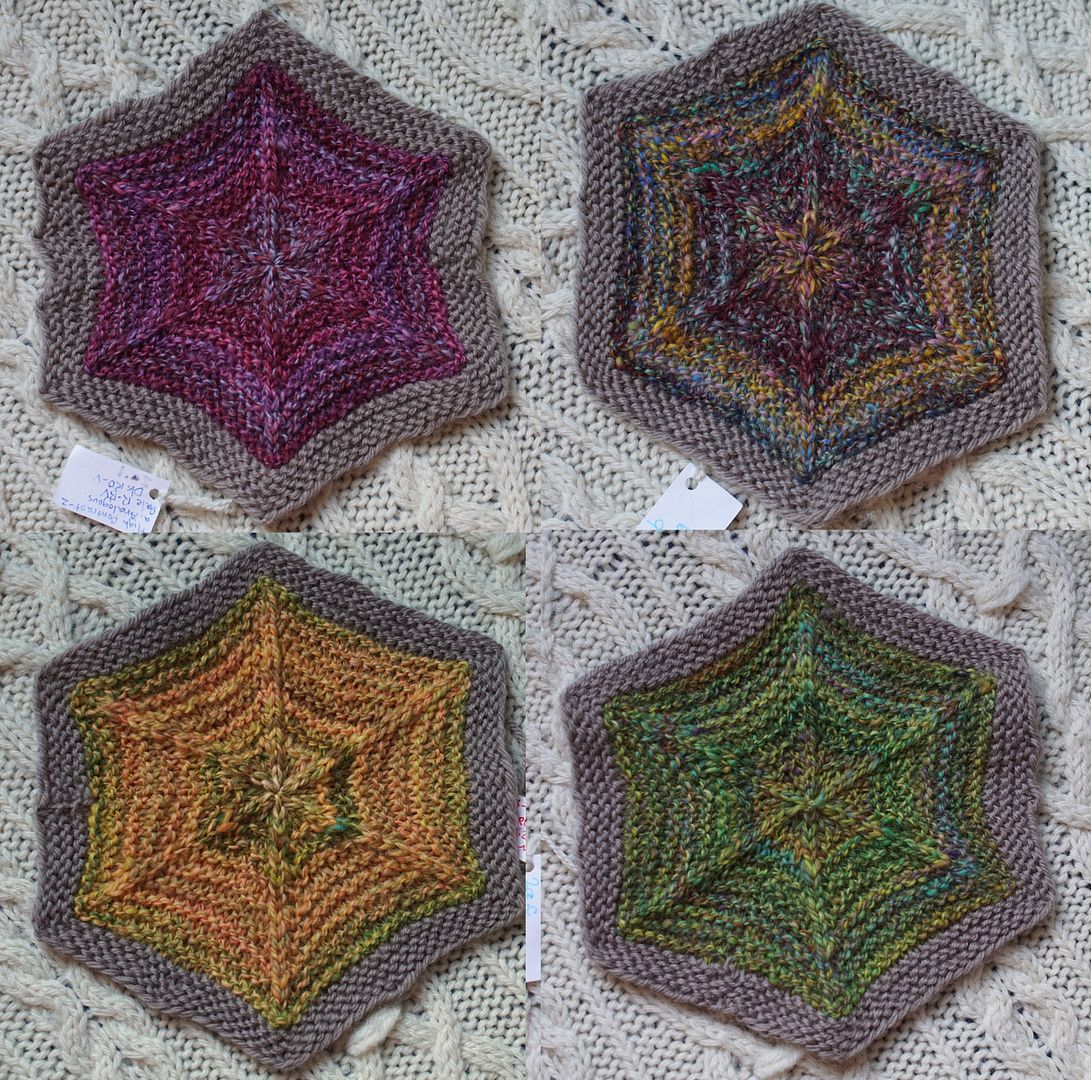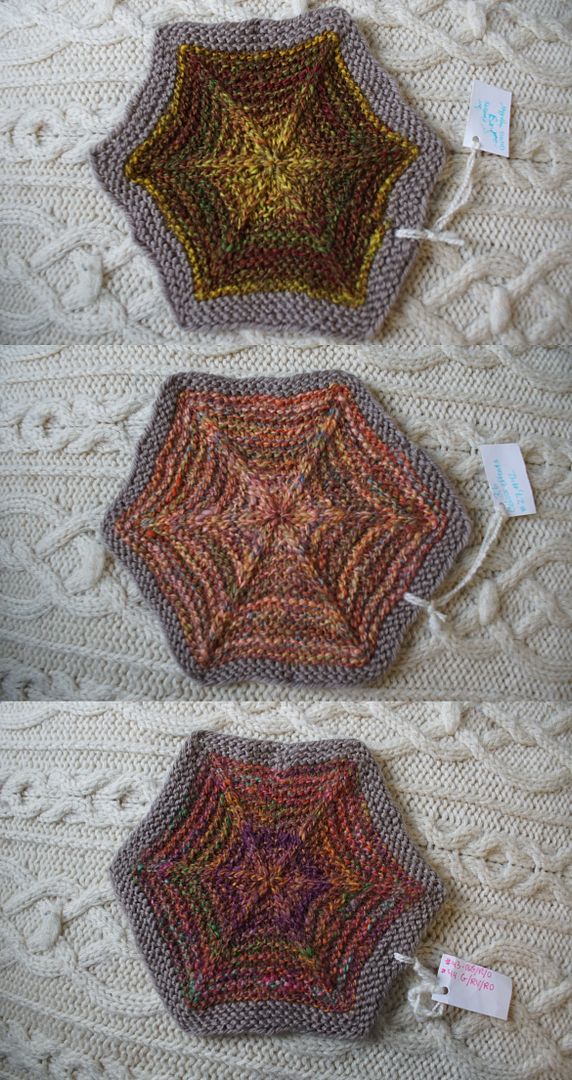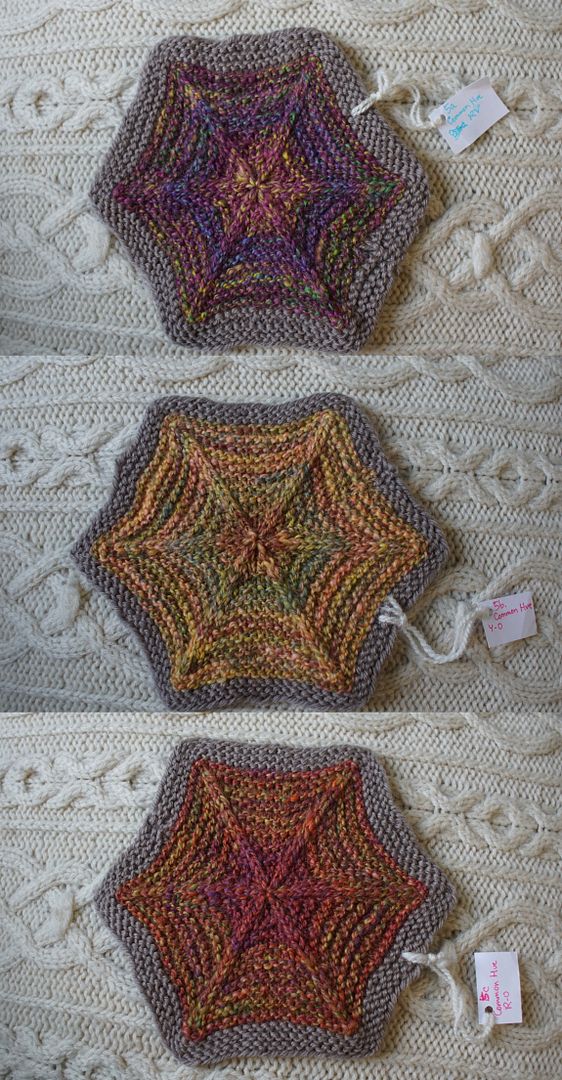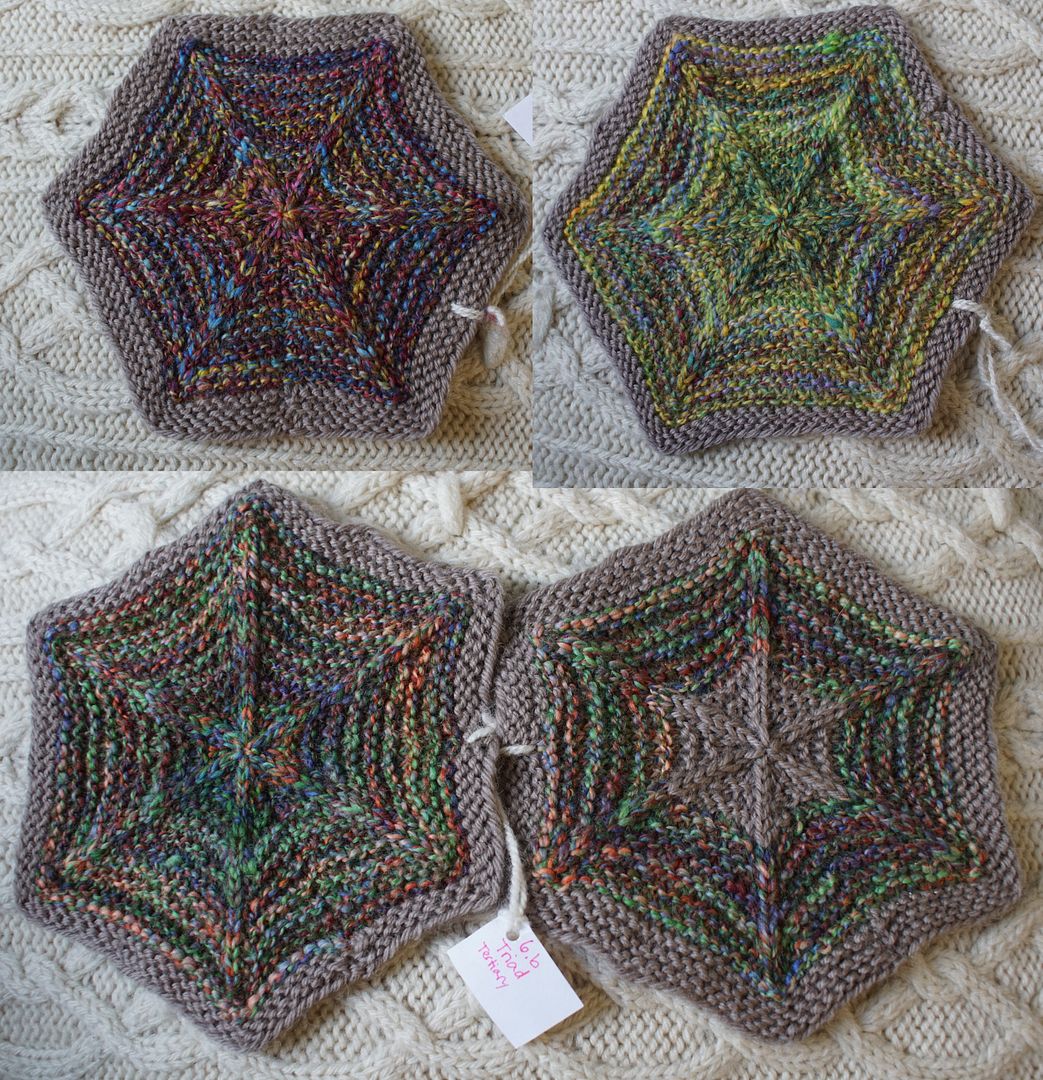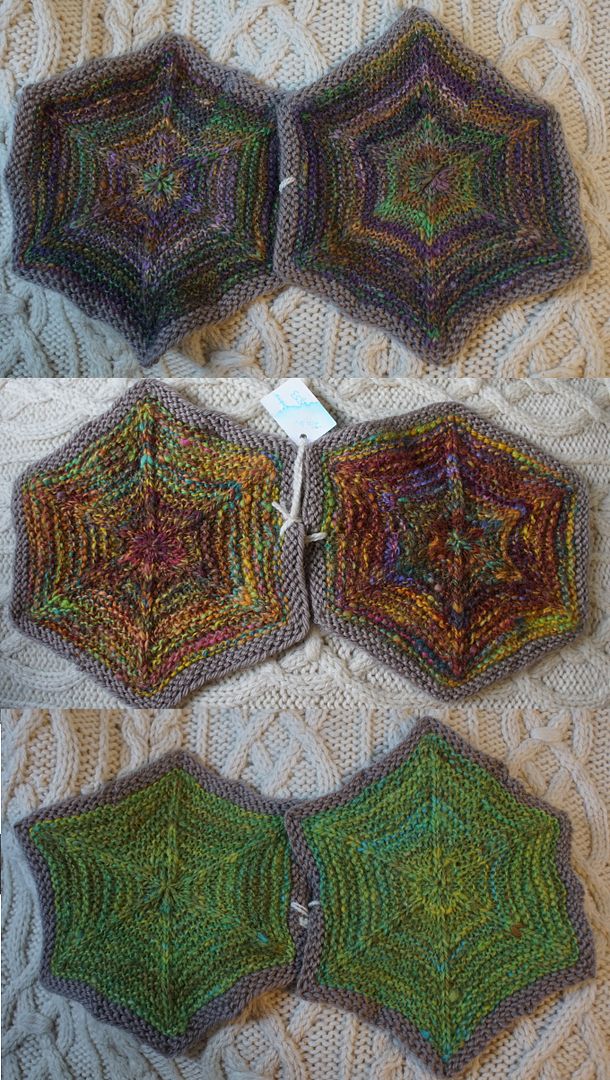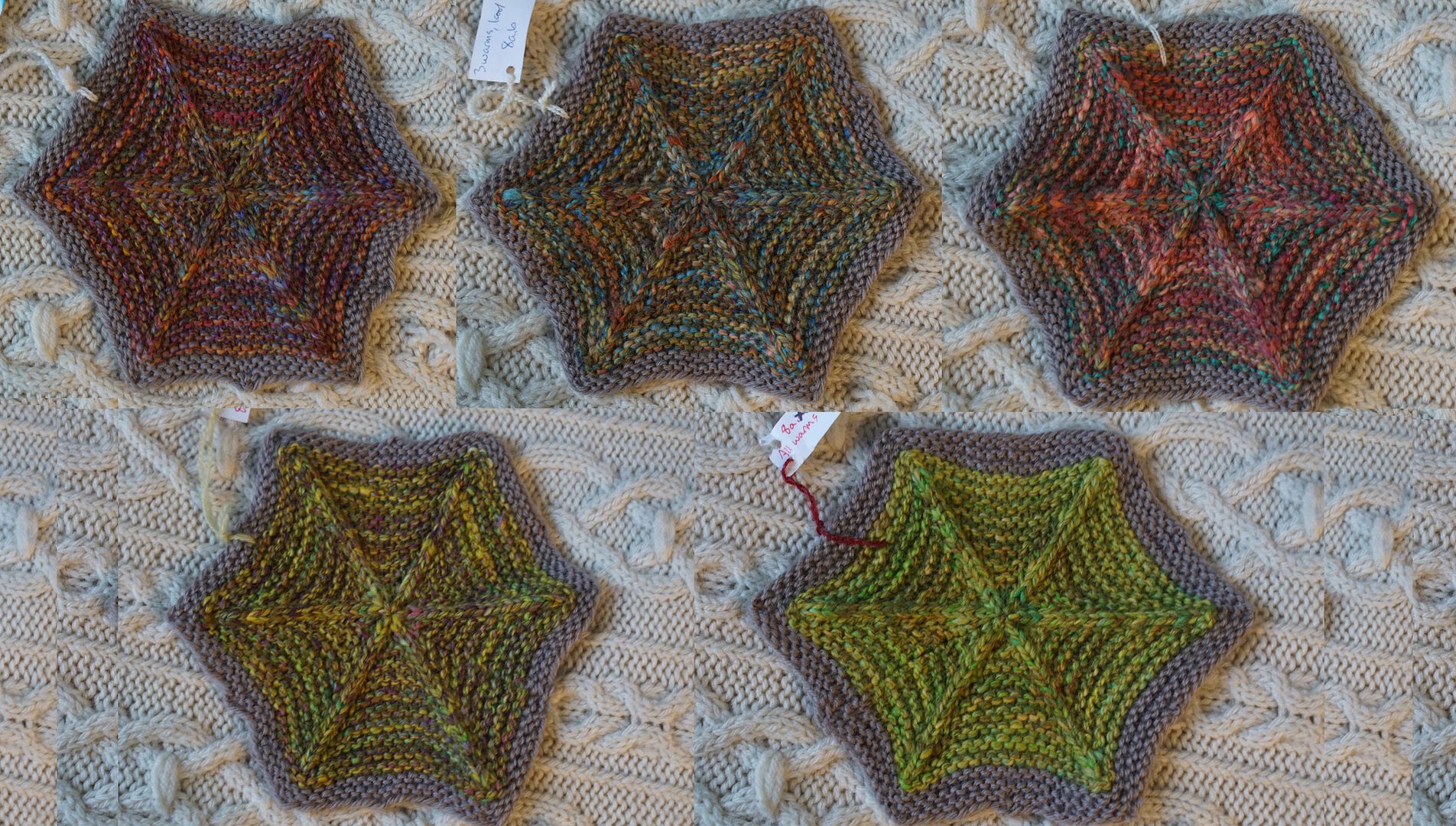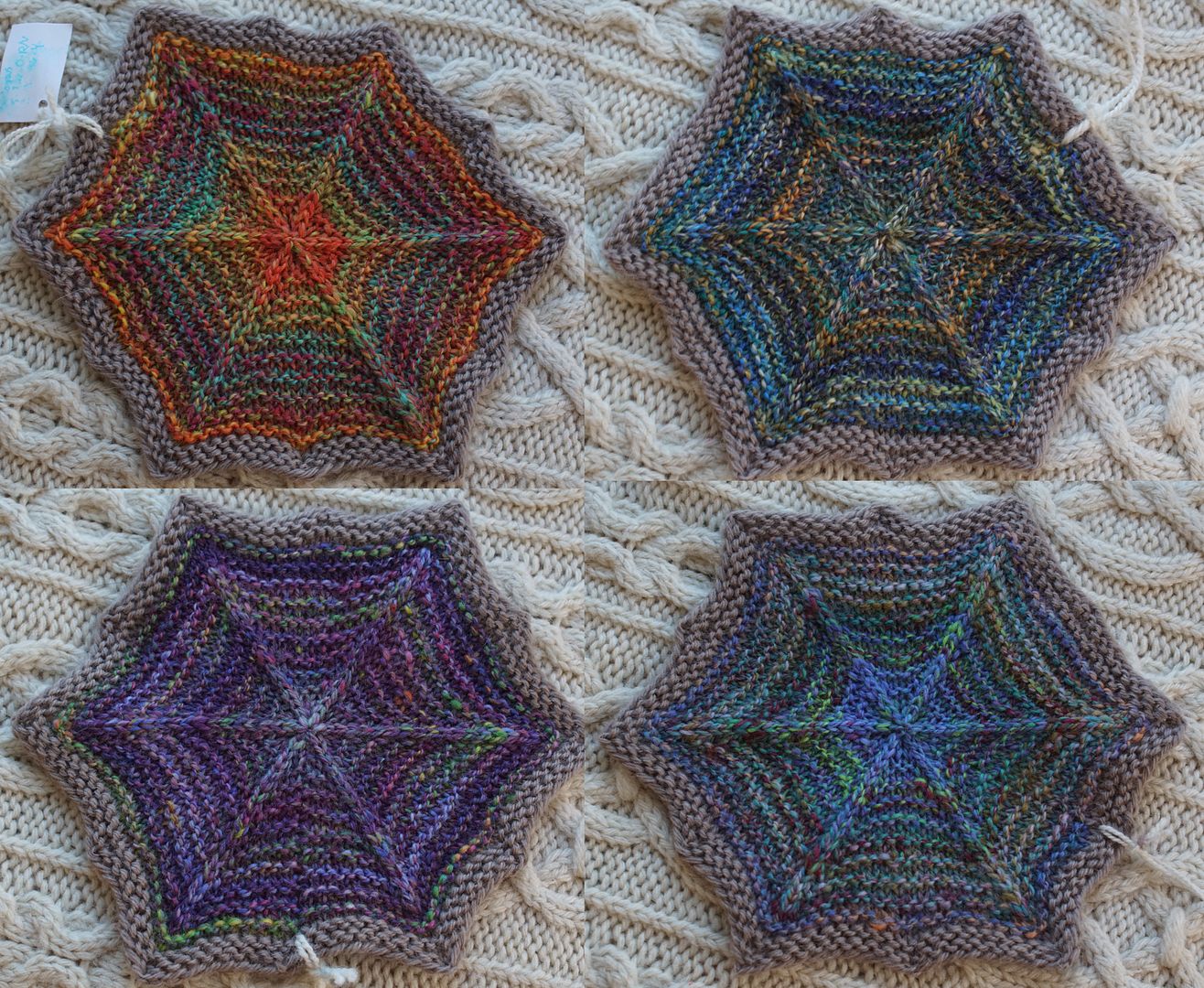“Dyeapalooza” of last summer was Part 1 of the exercises at the end of chapter 4 of Color in Spinning by Deb Menz. The combo spinning that resulted in the “Skep” blanket (pattern by Kate Davies), is Part 2 of those exercises. This is all from page 110 of her book.
I used these exercise numbers to organize all my combo drafting experiments. Without that organization, I wouldn’t have been able to correlate and collate all the spreadsheets and photographs that I’ve been talking to death for the last seven months! You probably don’t care, but I thought I’d collect and explain those exercises here, because this is the order that I worked them in, and this is the order that I went through them on the Wool Circle. You’ll see each exercise with its completed hexies, along with links to the Wool Circle episode where they were discussed.
“Part 2. Splitting and combining rovings
“After the rovings are painted and dried, they are ready to be split into strips, bundled, and spun. Here is a series of suggestions for how to choose and use the rovings you have painted. When a color is suggested, it doesn’t have to be the only color on the roving, but it should be the dominant color.”
I skipped 1. Strip thickness. I’m pretty familiar with the idea of stripping handpainted top and seeing how it acts differently. I was ready for the the combos!
“2. High Contrast. Choose two rovings with a high contrast in value or hue. Split them into similar size strips, bundle two strips together, and spin. Watch to see that both rovings are drafting evenly. This should be easy to see because of the high contrast.”
She said “value or hue,” so I made four with contrast of value (2a), and four with contrast of hue (2b). I covered all eight of these in Wool Circle episode 100.
“3. Color effects. Combine strips of two rovings that have colors in common, but are not the same. Observe how colors recede and pop out in the yarn.
These combos were covered in Wool Circle ep. 101.
“4. Try three strips. After you are comfortable spinning a two-strip bundle, try spinning three strips at once. Right now the color choices are not as important as concentrating on controlling the spinning technique.”
This trio was covered in Wool Circle ep. 102.
“5. Three rovings with a common hue. Choose three rovings that have at least one hue family in common. The other colors on the rovings do not matter. Split the rovings, bundle three strips together, and spin.”
Discussed in Wool Circle 103.
“6. Triad. Choose three rovings that represent a triad, such as primarily red, primarily yellow, and primarily blue. Split, bundle, and spin.”
Three colourways, four hexies: discussed on Wool Circle 104.
“7. Value contrast. Choose four rovings with colors that contrast in value. Split, bundle, and spin. Practice controlling and drafting from four strips at once. The yarn will look ‘active.’
These high-value-contrast exercises were numbered 7a.
“Now choose four rovings that are similar in value. Split, bundle, and spin. The yarn will look more subdued.”
I numbered these 7b. I believe all of these were covered on Wool Circle 105.
“8. Cool and warm colors. Choose three different rovings that are all warm, and one that includes cool colors. See which colors pop out and which colors recede.
I really enjoyed these! These are all numbered 8a. I *think* this is correct: The top three were on Wool Circle 106, and the bottom two were on Wool Circle 107.
“Now choose three different rovings that are all cool, and one that includes warm colors. Examine the color interactions to see which colors are dominant and which colors recede.”
These are 8b. The first one was discussed on Wool Circle 107, and the other three on Wool Circle 108.
“9. Complementary colors. Choose two complementary rovings. Look to see if the colors intensify each other. If not, try spinning a different size of yarn or choose a different value or saturation of one of the rovings.
“Now choose two rovings in an analogous range and one that includes some of the complements. This will show how complements can act as accents.”
I treated this as one big exercise, and didn’t follow much of the nuance – just made sure to spin some things that had complements in there, to greater and lesser success. It was a lesson in proportions. Covered on Wool Circle 109.
“10. Add natural or solid colors. Choose one or two painted rovings and add a strip of either a natural or dyed solid-color roving. Try using a roving that is similar in value to the painted rovings, one that has a value significantly lighter than the painted ones, and one that is significantly darker than the painted ones.”
Reading this again, I think she meant to take one pair of colourways, and put the same pair together with three different solids. That would have been interesting too! I covered the two brown colourways and the first peach one on Wool Circle 110, the second peach and the two eggplant ones on Wool Circle 111.
Exercises 11 and 12 are being covered in my other “capstone” project!
“13. Try a random combination. Choose three or four rovings at random and spin them together. Sometimes unlikely combinations give wonderful results.”
Five colourways six hexies. Covered on Wool Circle 112.
That was… a lot of content, you guys. Those of you with an organizational bent will appreciate this primer on the numbering in the posts to come; those of you without such a bent hopefully spared yourselves and stopped reading a long time ago. With that under our belts, tomorrow we’ll start looking at all these hexies by colour!
